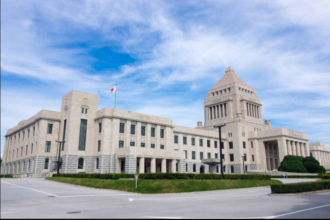Following a protracted break brought on by the global epidemic, North Korea has once more let foreign runners enter its country and staged the Pyongyang International Marathon for the first time in six years. Offering a unique chance to run the marathon inside one of the most remote countries in the world, this historic event brought global attendees back to Pyongyang. Usually scheduled every April, the marathon honors the birth of Kim Il-sung, the founding leader of North Korea. This much-awaited event offers a look into the North Korean way of life alongside sports rivalry.
Why Did North Korea Call Off the Marathon?
First organized in 1981, the Pyongyang International Marathon rapidly evolved into an annual event, attracting runners from all around the world. Usually occurring each April, it celebrated Kim Il-sung’s birth on April 15th in addition to acting as a sporting event. But the race was last run in 2019, with about 900 foreign competitors, among the biggest international events the nation hosts at that time.
North Korea sealed its borders in 2020 with the start of theCOVID-199 epidemic as part of strict policies meant to shield itself from the virus. North Korea confronted hitherto unheard-of difficulties, much like most of the globe. Travel restrictions were placed on the nation, and it entered a protracted period of isolation. This resulted in the cancellation of the marathon for several years. North Korea was mostly closed since 2020, admitting only a limited number of Russian visitors into the capital starting in 2024, hence, the return of the marathon marks a major turning point for both travel and foreign policy.
How Travel Conditions Now Affect Foreign Runners?
While most of the world went into lockdown because of the epidemic, North Korea’s border controls were especially severe, and only now has the nation begun to open again. Though foreign visitors started to return in small numbers in 2024, the nation’s reopening policy is still gradual and wary. Like in past years before the epidemic, foreign visitors interested in running the marathon must still enter under the direction of an arranged tour group.
Koryo Tours, a Beijing-based travel agency classified as an “exclusive partner” for the event, is one of the ones helping this process. The business provides two 195 euros ($2,406) six-day marathon tour packages, including Beijing flights to and from. Along with running the marathon, the trip allows participants to see sights of Pyongyang and engage with residents. Koryo Tours claims that “The Pyongyang Marathon is an extremely unique experience as it offers runners a glimpse into daily life in one of the most secretive nations in the world,” allowing them to engage with residents.
Even with such travel packages, it is important to keep in mind that international attendees can only visit specific parts of the nation and have to follow rigorous policies and guidelines while staying. This includes guided tours to guarantee that interactions between tourists and residents are under control, therefore enabling North Korea to keep control over what is seen and experienced by outsiders.
The course of the Marathon looks like what?
The marathon course this year wound across some of Pyongyang’s most famous sites. The Kim Il-sung Stadium, honoring the founding leader of the nation, hosted the race both starting and finishing points. Among the biggest and most well-known stadiums in North Korea, the one has seen numerous important events in the country’s past. Viewers abound, many of them waving gold-colored paper flags and supporting the runners. As the runners negotiated Pyongyang’s streets, the air was one of great local excitement and pride.
Along with several other well-known sites in the city, the path also went past the Arch of Triumph. Built to honor Kim Il-sung’s early 20th-century opposition against Japanese control, this massive arch, like the Arc de Triomphe in Paris, reflects North Korea’s national pride and the ideological base set by its founding leader. Runners could also glimpse Mirae Future Scientists’ Street, a residential area meant to accommodate the top scientists and engineers from the nation as they passed through the streets. This region represents North Korea’s concentration on scientific research as a pillar of its future and on technical development.
Apart from the event, the marathon gives foreign competitors a rare and insightful look into the daily life of Pyongyang, a city most closed off to most visitors. Although most visitors are limited to guided tours of pre-approved locations, the marathon offers a special chance to engage with the local populace in a public, yet under control environment.
About the EExperience, What Do the Runners Think?
For many of the foreign runners, the Pyongyang Marathon serves as more than just a competitive venue. It’s a chance to see the capital of one of the most isolated and secretive nations on earth. Thousands of people supporting the athletes created an electrifying environment in the stadium. For North Korean athletes, the marathon is quite personally important.
North Korean marathoner Pak Kum Dong offered his story: “The eyes of our people on me helped me to bear the difficulties whenever I feel tired.” Pak’s comment emphasizes the strong feeling of national pride enveloping the occasion. Further underlining the significance of the event in North Korean society, the encouragement of runners during the marathon depends much on the support of the local audience, who are typically seen cheering and waving flags.
The marathon itself allows North Korea to present its successes and convince the outside world that, despite its isolation, it is still strong and resilient. Acting as a kind of soft diplomacy, the event invites foreign guests to interact with the nation under the authority of the story.
The fact that the race results are not publicly known, however, highlights even more the closely regulated character of events in North Korea. International runners take part in the race, although there is little openness about the results of the competition or more general organizational issues of the event.
How Has North Korea Reopened Following the Pandemic?
North Korea has been slow to ease its severe Covid-19 restrictions in the wake of the epidemic. Midway through 2023 the government started progressively reducing its regulations, allowing for a limited return of foreign visitors. North Korea opened a remote, eastern city called Rason to a small number of Western visitors in February 2023. But those visits were swiftly canceled just a few weeks after they started, underscoring the country’s dubious and wary approach toward reopening.
Notwithstanding these obstacles, the comeback of the Pyongyang Marathon marks a major turning point in North Korea’s attempts to reintegrate with the outside world—even if in a restricted and regulated manner. Events like the marathon provide a unique, though uncommon, opportunity to interact with a location that most people still know little about as the nation keeps gradually opening its doors to foreign guests.
Final Thought
The comeback of the Pyongyang International Marathon after six years marks both a return to normalcy and a chance for foreign guests to visit North Korea’s isolated capital. The marathon offers foreign competitors not only a physical challenge but also an unmatched cultural interaction in one of the most remote countries on Earth. Although the marathon is a controlled spectacle and the race results are yet unknown, the event offers a rare opportunity to see the inner workings of North Korean culture while participating in an original athletic event. North Korea seems to be gradually letting the outside world have a closer look at its interesting and mysterious capital as cautious moves toward reopening allow.








